Today, I would like to talk to you about the history of a city in the south of Spain: Algeciras (in the province of Cádiz).
The convulsive historical evolution of Algeciras and its periods of boom and decay –it was razed by the Normans, in the year 859, and the Berbers of Sulaymán al-Musta'in, in 1011, and ended up destroyed and erased from the map by the Nasrids, around year 1379-- evidence both the strategic importance of the city, its port situation, its owners and those who sought to dominate it, as well as its frequent crisis of political and military instability. This caused that it was besieged, in numerous occasions and, finally, destroyed and abandoned.
After long and fruitful periods of boom and demographic, economic and cultural development, during the Caliphate and the Almorávide and Almohade stages, the hour of disappearance arrived as an urban enclave: the last and definitive destruction was suffered by the city around 1379, when Sultan Muhammad V of Granada ordered it destroyed, leaving the city and its term uninhabited until 1704, when it began to resurface with neighbours from Gibraltar.
Since antiquity, the founding of a new city had to respond to certain physical conditions such as edaphologic, orographic, climatic and hydrological, as well as ideological and strategic approaches, that its founders sought to know and verify before starting the construction of the new city.
Ibn Khaldun (fourteenth century) refers that to found a city, it was necessary to choose a place, where the air was pure and not prone to diseases and that it was necessary to attend to several questions: first of all the water, since the city had to be located on the banks of a river or in the vicinity of several pure and abundant springs. To be protected from surprises, --writes the famous sociologist and historian-- he must have a wall encirclement that surrounds all the houses and occupy an invulnerable and elevated point on a sea peninsula or a river. It must have nearby suitable lands for the culture and to count in its environs, with a forest where its inhabitants, can be provided with firewood and beams for the constructions ...
Al-Yazira al-Jadrá (the Island or Green Peninsula) was founded by the Governor of North Africa, Musà ben Nusayr, next to the barren city of Iulia Traducta, in the spring of the year 712.
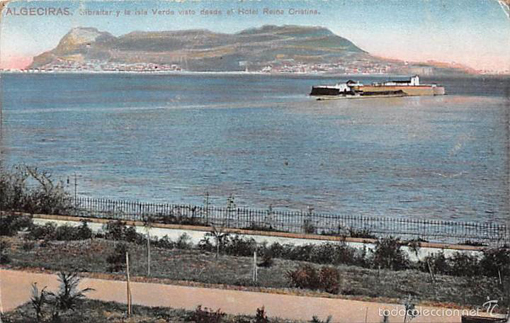
The Isla Verde on the right side and Gibraltar in the background
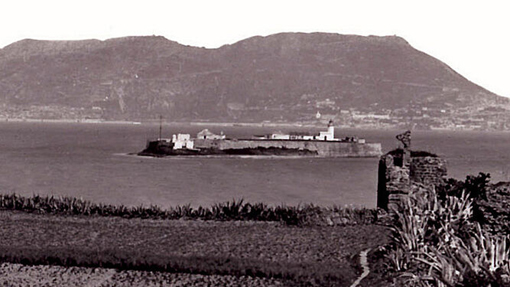
La Isla Verde up close
He chose the summit and slope of a peninsula, located between the river, --which was later called wadi al-'Asal, (Rio de la Miel = River of Honey) and the coastline, at the place where, a year before, the Berber leader Tariq ben Ziyad had disembarked and established his camp, fulfilling the premises laid out by Ibn Khaldun: easy defense, existence of farmland (fertile and extensive fertile plain of the river and wide spaces for the sowing of cereals bread), nearby forests, elevated and healthy settlement , sheltered port, etc.
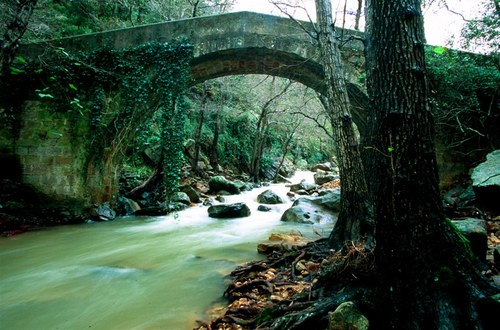
Rio de la Miel
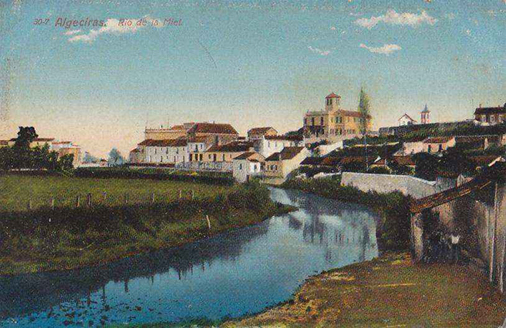
Another section of the river
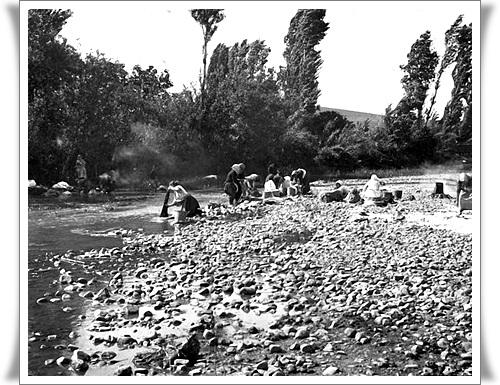
Washers in the river formerly
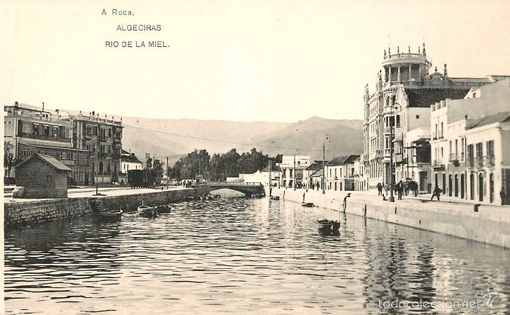
The river near the sea
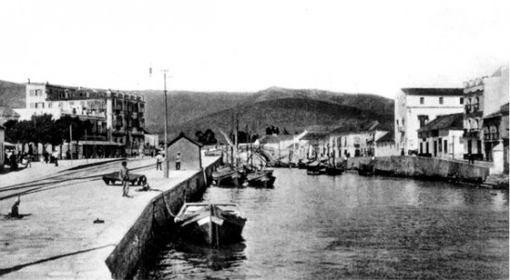
The river from another angle
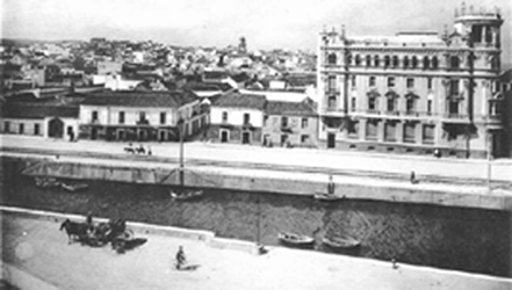
The River and Algeciras in the background

Aerial view of the mouth of the Rio de la Miel
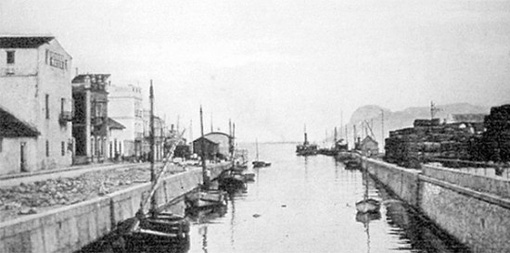
Another view of the mouth of the river
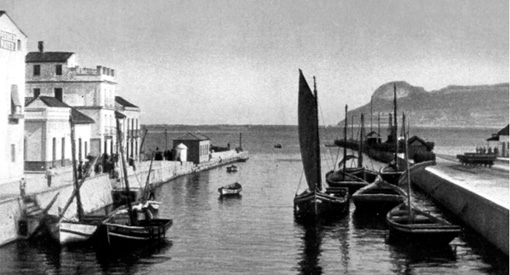
The mouth of the river up close
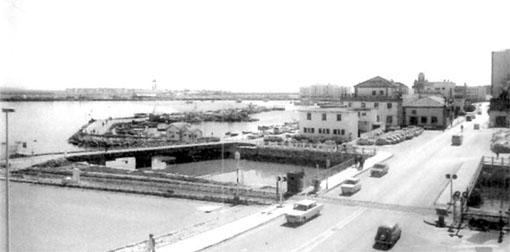
Another view of the mouth with the Paseo de la Conferencia
Although some Arab authors say that the city, that later became known as Algeciras, was an enclave inhabited by the arrival of the Arab-Berbers in 711, the truth is that, as archeology has shown, when Tariq established his expeditionary camp where he later It would erect the city of al-Jazeera al-Jadra, occupying a hill located north of the river, surrounded by it, facing the ruins of the ancient Roman city of Iulia Traducta, now abandoned, or only used as a small and occasional enclave port.
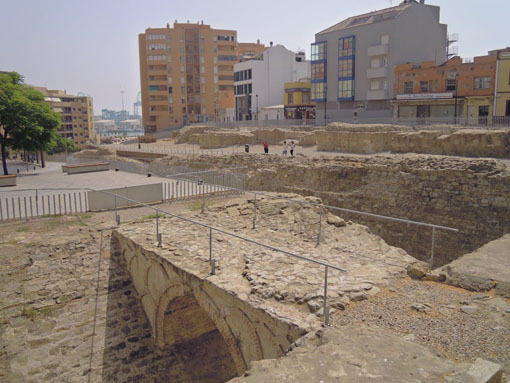
Ruins of Julia Traducta
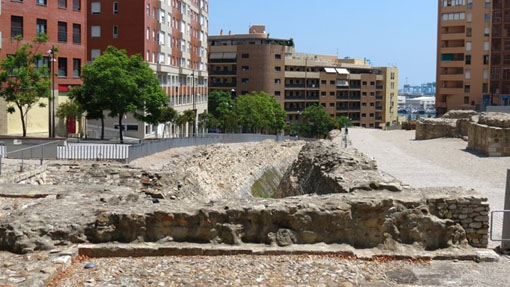
The ruins up close and the port in the background
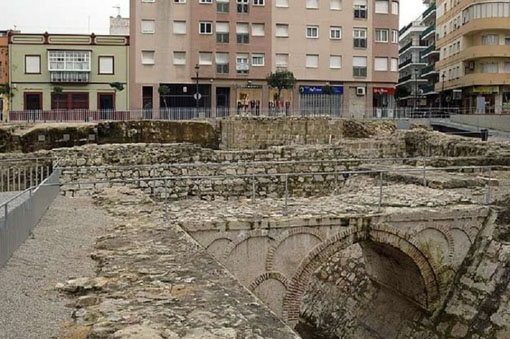
Another angle of the ruins
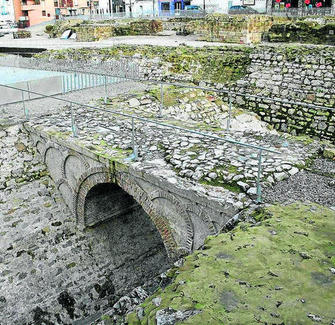

The Dikr (XIV-XV centuries) refers to Algeciras saying that it was a city founded, in antiquity, by the primitive inhabitants of al-Andalus. According to al-Zuhri (XII century) it was erected by the Goths, although it is said that it was founded by the Greeks, who settled there in the time of Abraham. The Ajbar Machmu'a (11th century) say that once Tarif Abu Zur'a landed in Tarifa, in the year 710, he went in algara against Algeciras; he made many captives, as neither Musà nor his companions had seen them similar, he collected much booty and returned safely to Ceuta. Al-Maqqari (XVII century) repeats the same text, but adds that, according to others (chroniclers), Abu Zur'a entered with three thousand men and heading towards Algeciras, its inhabitants fled from it. Almost all burned, burning a large church that they had, took a few prisoners, killed others and returned to Ceuta. Ibn 'Idari (twelfth century) refers to the fact that, when Tariq ben Ziyad landed in Hispania, at the time there were the foothills of the mountain (of Gibraltar) lookouts of Algecira al-Jadrá. Al-Maqqari takes it for granted that Algeciras was a city with port activity, when it was taken by Tariq in 711. This chronicler remarked that Tariq wrote to Musà, asking for troops and informing him that he had conquered Algeciras, the port of Spain, and dominated the passage of the Strait.
The church Our Lady of La Palma was opened to worship in 1738, because the Chapel of Our Lady of Europe was too small.
And the Chapel of Our Lady of Europe was built in 1690.
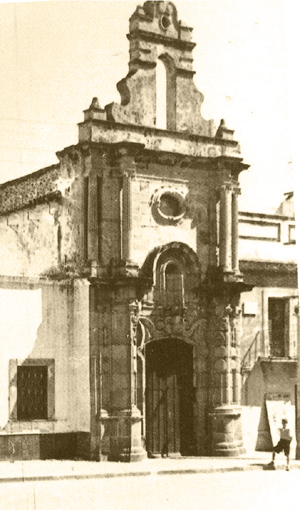
The Chapel Our Lady of Europe in 1954
That was the appearance of the Chapel after its remodeling, after the Lisbon earthquake, in 1755; it was replaced by a small Baroque style building in 1769.
And today it looks similar:
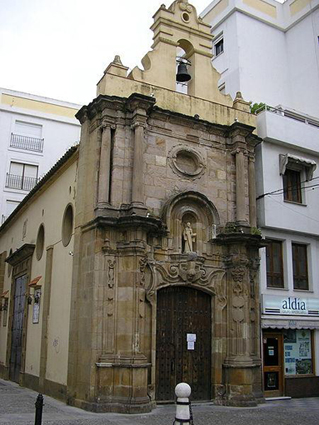
The Chapel at present

The Plaza de la Constitucion and the Church of Our Lady of La Palma, before 1931
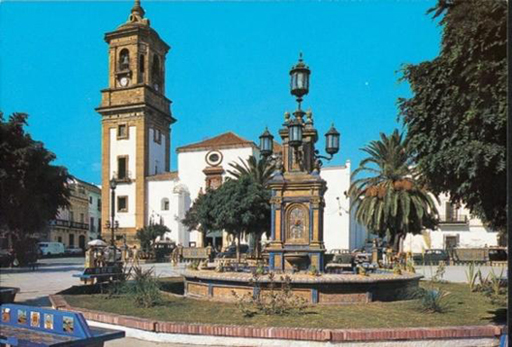
The Plaza Alta and the Church of Our Lady of La Palma in the 50s and at present
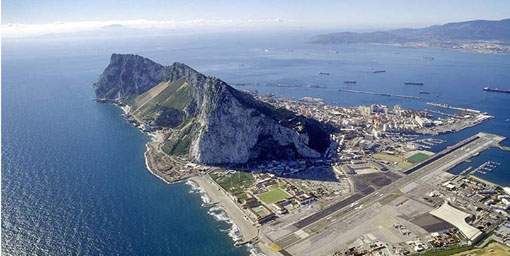
Gibraltar up close and Algeciras on the right side
It is very probable that these stories, which refer to facts very far in time, are idealised and manipulated by these late chroniclers and that the truth is that Tariq could only find a small harbor, sparsely inhabited in the lower course of the Miel River, when he landed with his troops, in Gibraltar, in the spring of the year 711. Ibn Ibn Abd al-Hakam (9th century) writes that Tariq set off (from Gibraltar), passed a bridge that led from the Mountain to a town called Qartayyana ( Carteia) and continuing in the direction of Cordoba, he passed near an island (Isla Verde) in which he left his young slave, Umm Hakim, with some of his warriors. "This island, since then, is known by the name of Yazira Umm Hakim".
 a 18 cm.jpg)
Qartayyana ( Carteia)
There is no doubt that the founding act of the first Muslim city, erected on the Iberian Peninsula, Algeciras, was carried out in the summer of 712. Once Musà disembarked on the coast of Spain, in the place where Tariq had installed his camp and before leaving with his army inland to meet the Berber general in Toledo, he gathered all the flags of the Arab commanders, in an assembly that did not dissolve without first having indicated the foundational layout (tajtit), choosing it to build a mosque. In the opinion of Professor Pedro Chalmeta, the layout and foundation of a mosque, as the first action of Musà to set foot on Spanish soil, represents the founding act of al-Jazeera al-Jadra. That mosque was called the “Mosque of the Flags” in memory of that event and was still in use in the thirteenth century, when it is cited by several chroniclers of that time.
The remains of the first Mosque, built in Spain, is inside the gardens of the Hotel Reina Cristina, in Algeciras:

Remains of the Mosque of the Flags
Talking about the Hotel Reina Cristina, from there you could have a good view of the Isla Verde (The Green Island).
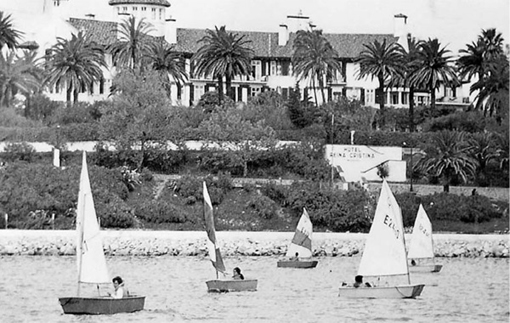
The Hotel Cristina
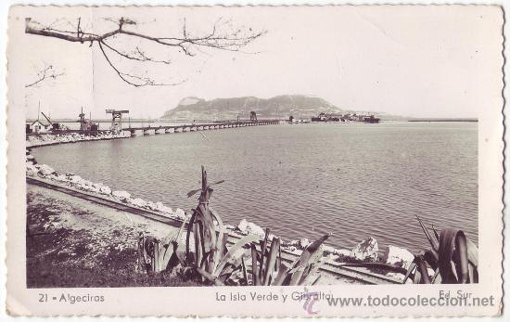
The Green Island joined to the port seen from the Hotel Cristina
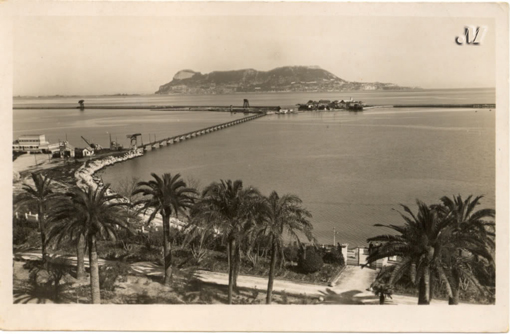
Another view of the Green Island joined to the port
Within that Island, there was the so-called "Isla Verde Fort". The Isla Verde fort is a military installation, designed by the engineer Juan de Subreville and built in 1734 on the Isla Verde, in front of the Old Town of Algeciras and the mouth of the Miel River, an engineer who also designed the reconstruction of the Castle of Valencia of Alcántara, in the western part of the province of Cáceres. The Fort was built on the occasion of sieges to the city of Gibraltar and expanded over the centuries until the construction of two machine gun bunkers, in 1942. It is currently inside the Port of Algeciras, which has been very wait for new archaeological interventions, that put it in value.
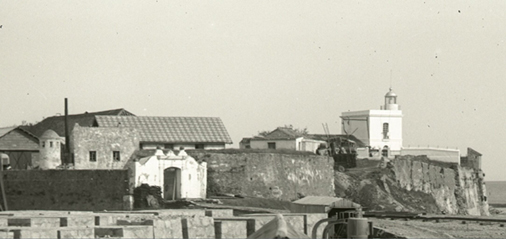
The Fort Isla Verde with the lighthouse
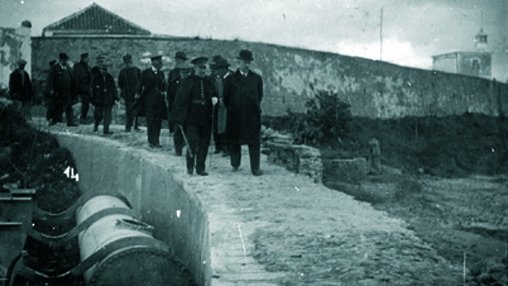
Some people come from the Fuerte Isla Verde
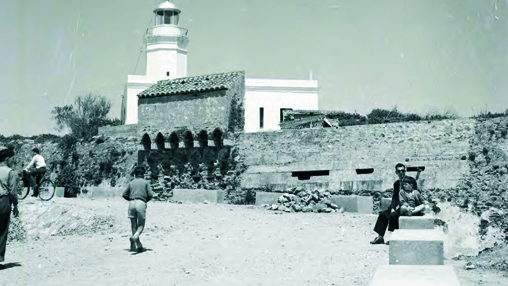
The old latrines
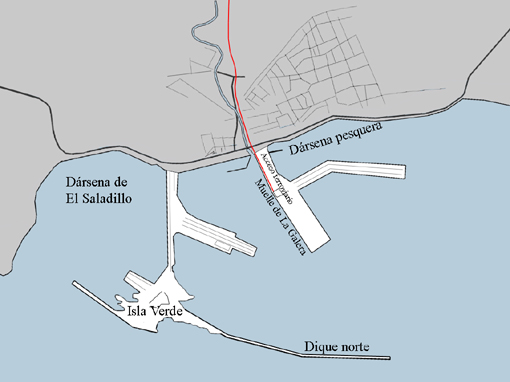
The new plane with Isla Verde in 1964
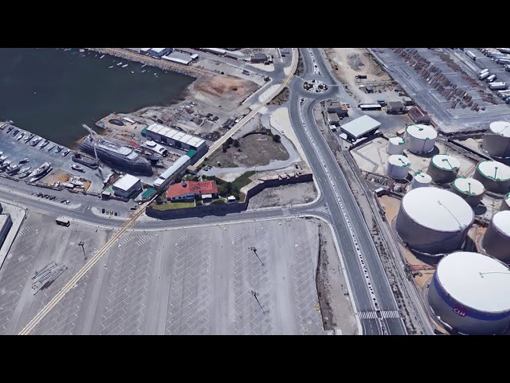
Aerial view of The Fort Isla Verde recently
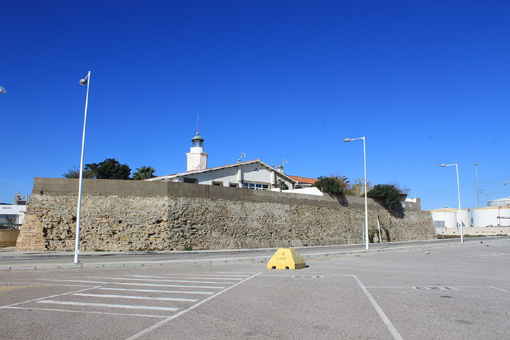
House with lighthouse inside the Fort Isla Verde
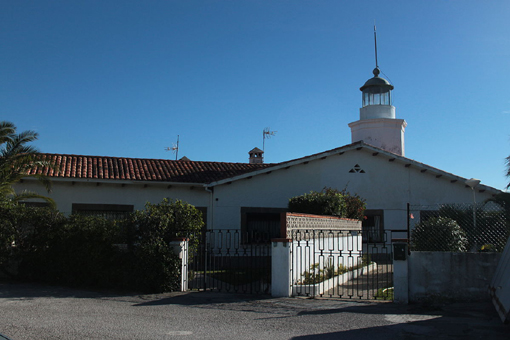
The lighthouse up close
Next to the lighthouse you can see a field where there was a military barracks formerly:
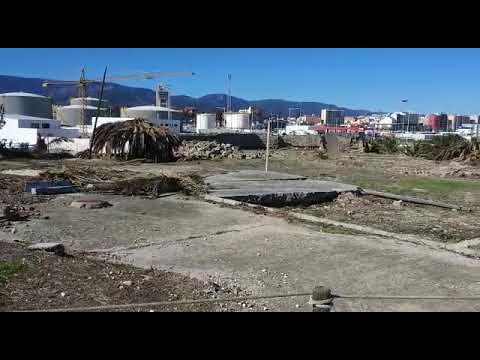
After the British conquest of the city of Gibraltar, in 1704, and the successive attempts to recover the stronghold by Spanish troops, the military authorities of this country became aware of the fragility of the coast surrounding the Bay of Algeciras. One of the main points of support for the defensive system, that began to be created at the beginning of the 18th century, was the Isla Verde of Algeciras, a small island of elongated shape and parallel to the coast, opposite the city and the port located at the mouth of the Miel River. Although perhaps the first elements of artillery were emplaced in the place, in the siege of Gibraltar of 1704 and already in the siege of 1727 there was a provisional battery, was not until 1734 when they began the works of fortification of the islet. The project of the fort was the work of the military engineer, Juan de Subreville, based on previous projects by Jorge Próspero de Verboom.
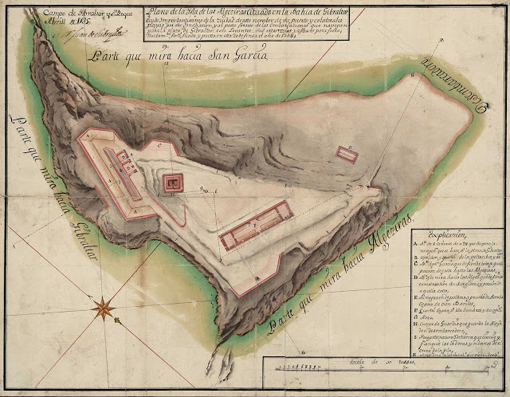
Project by Juan de Subreville
Fort Isla Verde had 3 batteries: A "Batería de Algeciras" (called "de San Cristobal" from 1745), was heading north, controlling ships that could attack the city's Nueva Villa, twenty metres long with capacity for 4 or 5 cannons.
In second place: the main Battery (of "Santa Barbara", from 1745), in southeast direction, its cannons went towards the entrance of the bay and could cross fire with the battery of the Fort of San Garcia, forty metres and thirteen cannons of heavy artillery.
Battery of San Garcia (San Francisco since 1745), aiming southwest, towards the battery of Punta Rodeo with which crossed fire, the smaller of the three, just 9 metres and two cannons.

Plan of Fuerte Isla Verde
The batteries were located on the edges of the island, and were joined together by a wall with scarp that prevented the landing. In the interior of the island, next to the battery of Algeciras, was the main barracks with a capacity for 70 men and three spaces: dormitories for officers, soldiers and food stores; between the main and San Garcia batteries, the barracks for artillerymen and the artillery storehouse were located. This building was separated from the main battery by a dyke, a structure that prevented projectiles, that did not hit the battery from, reaching the construction site; finally, in the centre of the island was the powder keg, a building with thick walls that prevented a projectile from detonating the weapons deposited there.
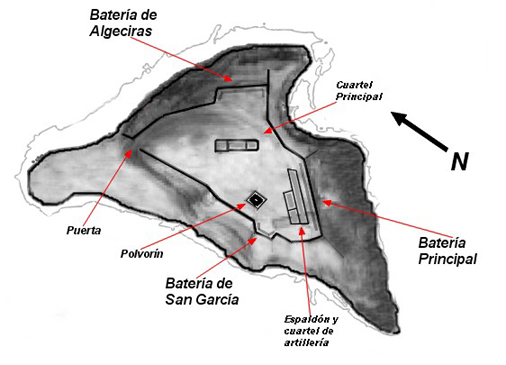
The Fort Isla Verde with the three types of battery

On the left side the entrance of the Fort Isla Verde

A piece of the wall with embrasure for cannon
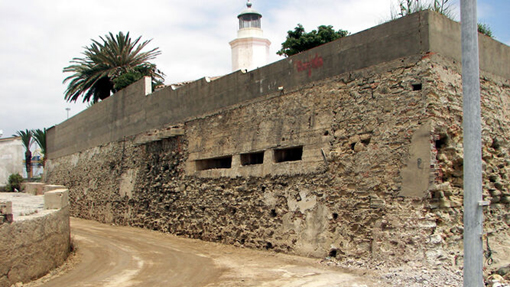
Another part of the wall with three embrasures for cannons
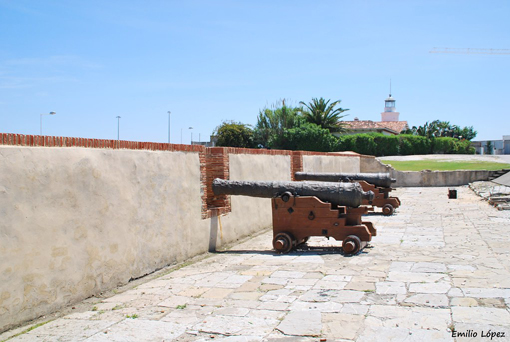
Two cannons and the lighthouse in the background
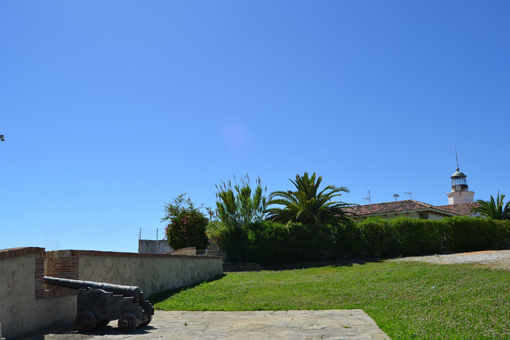
One cannon and the lighthouse
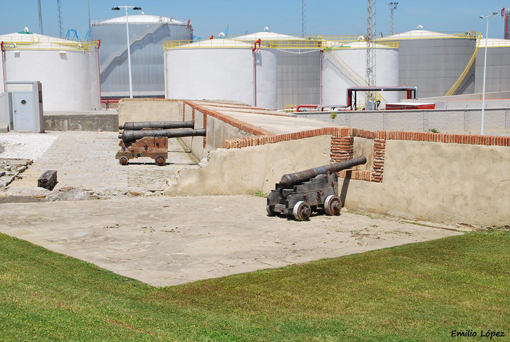
The three same cannons from another angle
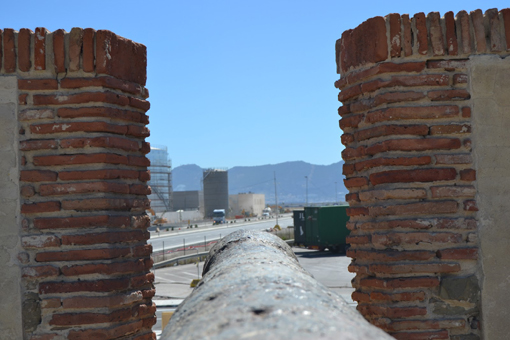
The view of a cannon from the embrasure

Another view of two cannons ant the lighthouse
In the north of the island, in the area at sea level next to the door, a provisional battery was built, in the 1745 reform, that was called San Joaquin, with the so-called Beach Guard Corps. Years later, in 1756 the barracks of the fort are conditioned to function as a prison for state prisoners. In 1779, during the Great Siege of Gibraltar, its artillery crew was enlarged, while a shipyard was built on the coast closest to the island and protected by the batteries where the floating batteries designed by engineer Arçon were built.
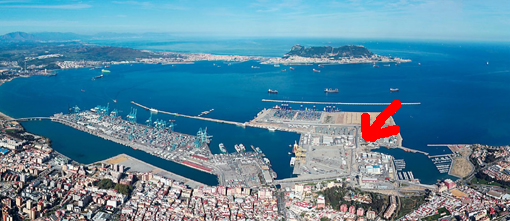
The Isla Verde beside the port
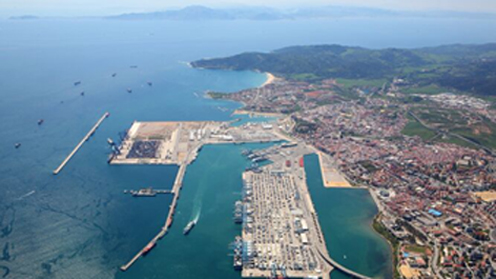
The port of Algeciras and the North of Africa in the background
The main military action, in which the Isla Verde fort would participate, was the so-called Battle of Algeciras in 1801, between the fleet of the First French Republic and that of the United Kingdom. On June 13 of that year, the French squadron, pursued by the British, took refuge in the bay of Algeciras under the protection of the batteries of Santiago, San García and Isla Verde. The development of this battle made that the fort was taking more and more importance, in the same acting, in the last moments like vanguard of the defending troops. The damage caused by the cannons of the island caused that James Saumarez, commander of the British fleet, ordered the disembarkation in the Green Island to take the fort. Several boats approached under mortar and rifle fire and some soldiers managed to disembark on the beach under the fortification wall. They can not, however, take the fort and the defending soldiers kill a large number of them and sink several boats until Saumarez orders the retreat.
In 1810, on the occasion of some reforms, a triangular entrance structure was built in the north of the island, together with the provisional battery. With the advance of the century, the facilities were in need of continuous repairs that were not carried out, so in 1825 two canvases of the wall fell as a result of a strong storm. In 1841, the main battery was extended with new embrasures in the north of the battery and, in the following years, three more were opened next to it along with a post for riflemen. Around 1845, the wall was complete after the repairs undertaken and its closure where the initial project did not contemplate. In 1863, the Isla Verde Lighthouse was built, a project by Jaime Font, inside the fort on the San García battery, that was rendered useless.
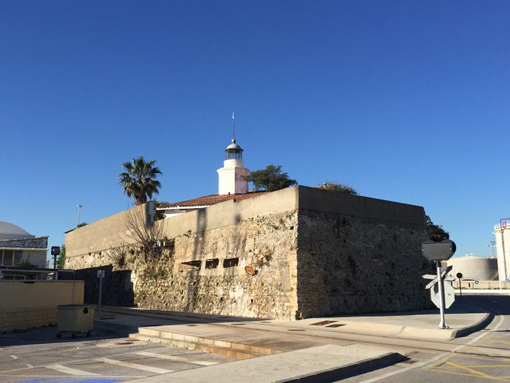
Lighthouse of Isla Verde on the battery of San Garcia
At the beginning of the 20th century, it was considered that the fortification ceased to have military use. The growth of the new port of Algeciras gave a new use to the area after in 1919 the facilities were ceded to the Board of Works of the port. In this way, its main structures were partially destroyed and integrated into the port with the construction of a shipyard attached to the south wall and several internal units for repairs. In 1939 within the Defensive Plan of the Campo de Gibraltar, a fortification project undertaken in the area of the Strait to avoid a possible allied invasion, during the Second World War, two bunkers were built, attached to the wall to the north and south and a cylindrical structure designed to deploy an anti-aircraft machine gun. Beside these bunkers, outside the wall, a troop barracks was built, which was occupied by 40 soldiers for a few years.
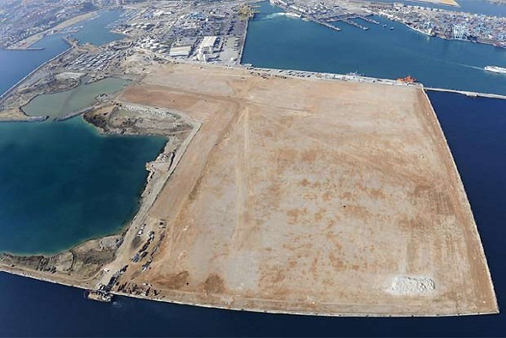
The new piece of port beside the Isla Verde
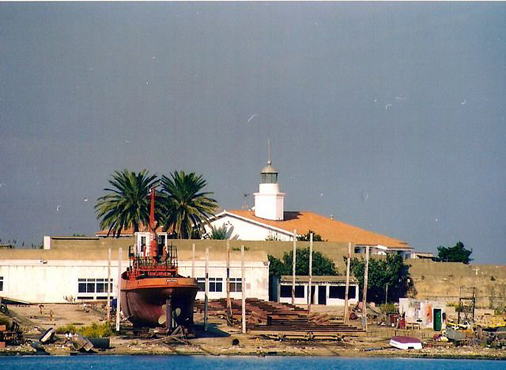
The new shipyard of Algeciras and the lighthouse of Isla Verde in the background
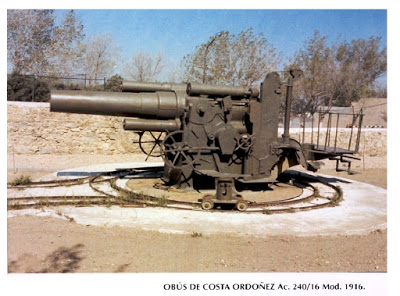
An anti-aircraft machine gun similar than this one
Over the years and the expansion of the Port of Algeciras lost the insular character of Isla Verde in the 60s. The fort was relegated to warehouse and repair area, carrying out numerous works that degraded and destroyed part of the previous structures. The original buildings were demolished and the central esplanade was filled. In 2006, various archaeological interventions by the Port Authority of the Bay of Algeciras discovered part of the constructions. The structures attached to the wall and the constructions of the 20th century were demolished. It acted on the northern embrasure of the main battery, recovering the original pavement formed with tiles from Tarifa, the floor of the barracks and the south wall that had been masked with the sheds of the attached shipyards. One of the bunkers and the adjacent antiaircraft artillery structure were also recovered.
Although, at present, the fort can be visited, it is not signposted and it is difficult to interpret its remains. For this reason, after the first archaeological intervention, carried out in 2006, and those that are proposed in the following years, the fortification is to be valued in order to add it to the cultural facilities of the city.
In any case, although the original Green Island has been lost and its surroundings have lost much charm, for such a large and functional extension, I believe that Algeciras still has one of the most beautiful bays in Spain, and we have to feel proud. I hope that our city continues to grow, in positive, and lose the bad reputation that it is having, because of drug trafficking.
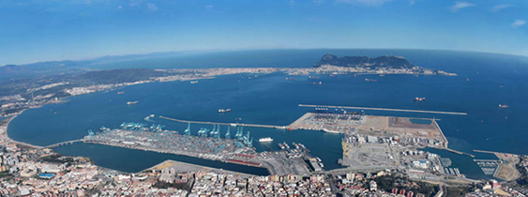
A great bay
I hope that you will like this article and hope that you can visit our city.
Until my next post, kind regards,
Luis.
Please click below:
